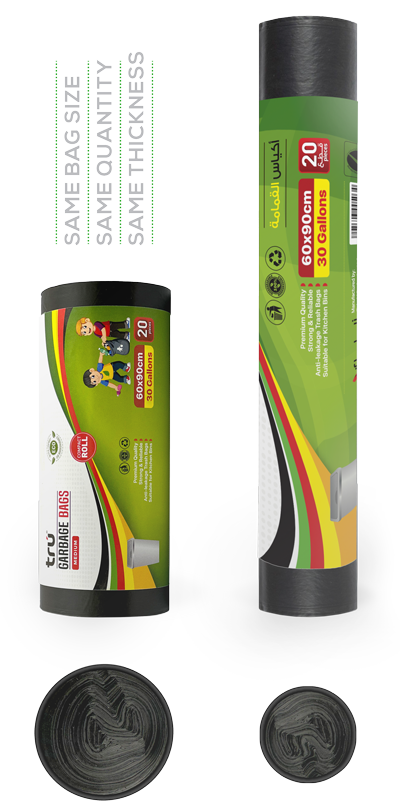In the evolving landscape of environmental responsibility and household budgeting, 2025 continues to witness a significant shift in how individuals and businesses approach waste management. Garbage bags—often overlooked as simple utility items—are playing a bigger role than ever in sustainable and cost-effective waste solutions. Whether for residential use, commercial facilities, or industrial environments, the right choice of garbage bags can help cut costs, reduce environmental impact, and streamline disposal processes.
This blog explores practical tips, trends, and strategies for getting the most value from garbage bags in 2025 without compromising on quality or environmental ethics.
1. Understanding the True Cost of Garbage Bags
The price tag on a roll of garbage bags isn’t the only cost to consider. In 2025, savvy consumers and businesses are evaluating the lifecycle cost—from purchase and usage to disposal. Here’s what factors into that:
- Durability: Thinner, cheaper bags may tear easily, resulting in double-bagging or extra cleanup costs.
- Capacity: Overstuffed bags lead to inefficient disposal and a higher frequency of waste collection.
- Waste Compatibility: Using the wrong type of bag for wet, sharp, or heavy waste can result in more product wastage.
Solution: Choose bags designed for specific waste types—heavy-duty for construction, leak-proof for food waste, and compostable for organic disposal—to avoid long-term inefficiencies.
2. Switching to Bulk Purchases
One of the simplest ways to maximize value from garbage bags is buying in bulk. Whether for households or facilities, bulk orders in 2025 often come with lower per-unit prices and reduced packaging waste. This approach also minimizes the need for frequent reordering, saving both time and fuel-related expenses.
Pro tip: Store garbage bags in cool, dry environments to preserve their material integrity, especially biodegradable and compostable varieties.
3. Opting for Size-Appropriate Bags
Using oversized garbage bags for small bins leads to material wastage, while undersized bags cause spillage and damage. A cost-effective approach is to match bag size to bin size. In 2025, manufacturers offer more precise size variations to cater to different usage needs.
Smart tip: Keep a range of sizes on hand for various needs—small bags for bathrooms and offices, medium for kitchens, and large for outdoor or industrial waste.
4. Reusability & Multi-Purpose Use
Though traditionally designed for single use, some garbage bags today are durable enough to be repurposed at least once—especially in non-contaminated or dry waste scenarios. From storage liners to garden cleanup aids, there are creative ways to reuse bags without compromising hygiene.
Examples of secondary uses:
- As liners for pet litter trays.
- As temporary covers for items during rain or painting.
- For packing materials during travel or shifting.
5. Embracing Eco-Friendly Alternatives
In 2025, biodegradable and compostable garbage bags have become more affordable and accessible. Though initially priced higher than standard plastic bags, these options deliver long-term value by aligning with green disposal policies and reducing landfill usage fees in some regions.
Cost-saving benefit: Several municipalities now offer rebates or reduced waste collection charges for residents and businesses using certified eco-friendly garbage bags.
6. Avoiding Overuse with Better Waste Segregation
Often, waste ends up unnecessarily filling up garbage bags due to poor segregation. Paper, food waste, recyclables, and hazardous materials should ideally be separated into designated bins, minimizing the volume of general waste and the number of bags used.
In practice:
- Separate food waste into compost bins (reducing wet bag usage).
- Recycle clean plastics and paper directly into collection bins.
- Reserve garbage bags only for true non-recyclables.
This not only saves on bags but also supports better environmental practices.
7. Educating Households and Staff
In shared living spaces, offices, and commercial properties, educating people on proper garbage bag usage makes a big difference. Clear communication on how to tie, fill, and dispose of bags avoids unnecessary usage or replacement.
Tips for implementation:
- Use signage near bins for guidance.
- Encourage compaction of waste before bagging.
- Train cleaning staff on selecting and using the right bags for the right job.
8. Evaluating Brand Claims and Features
With many products flooding the market, not all garbage bags live up to their marketing. Terms like “heavy-duty,” “extra-large,” or “eco-safe” can vary in meaning. Consumers in 2025 are encouraged to read product specifications carefully—check for thickness (measured in microns), tensile strength, certifications for compostability, and user reviews.
Choosing reputable, well-tested products—while avoiding overpaying for unnecessary features—is key to long-term cost-effectiveness.
Conclusion
Garbage bags are more than just utility items—they’re tools for responsible and efficient waste management. In 2025, cost-effective waste solutions begin with smart garbage bag choices: selecting the right material, size, and features, adopting eco-friendly practices, and avoiding waste through better planning and reuse.
By taking a thoughtful approach to these everyday essentials, households and businesses alike can save money, reduce their carbon footprint, and contribute to a cleaner future—one bag at a time.
